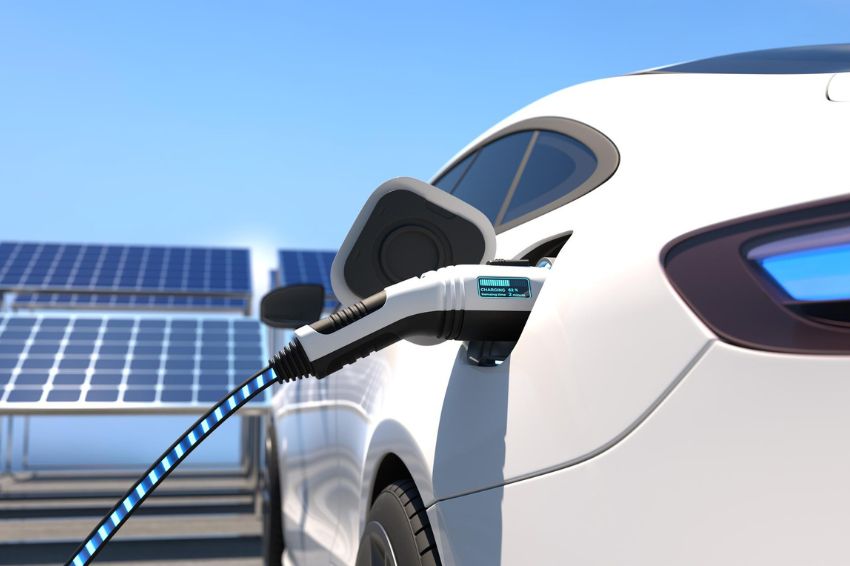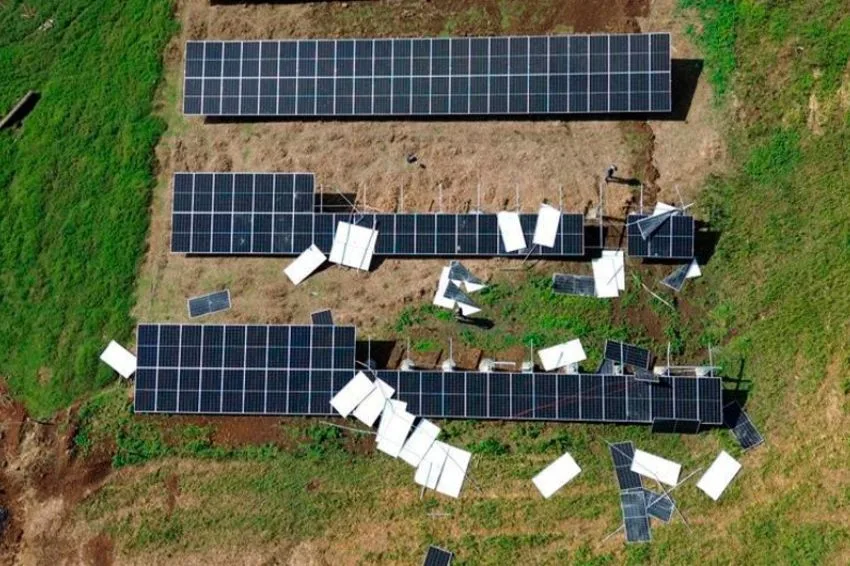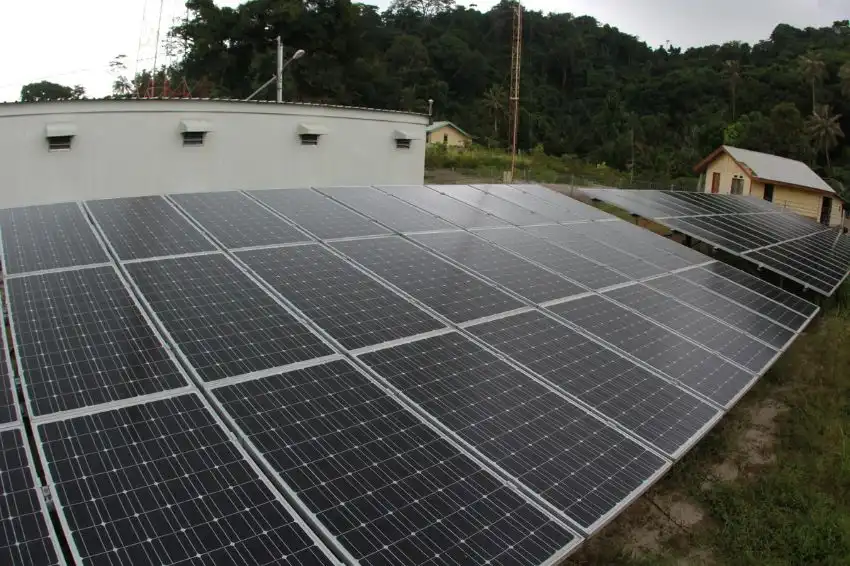In recent years, we have seen a growing awareness of the importance of sustainability and the need to reduce dependence on fossil fuels.
In this context, the solar energy, to the batteries, O H2V (green hydrogen) and electric mobility emerge as protagonists of a significant transformation in the energy sector and means of transport.
These technologies not only have the potential to drive sustainability globally, but also to create new markets, business models and income generation opportunities.
This article aims to explore how solar energy, batteries, green hydrogen and electric mobility are transforming the global scenario, presenting data on investments in renewable energy and electric mobility, in Brazil and around the world.
Solar energy: an ongoing energy revolution
Photovoltaic solar energy is one of the cleanest and most abundant forms of energy available. As technology advances, the costs of installing and producing solar energy continue to decrease, making it increasingly affordable.
According to the IRENA (International Renewable Energy Agency), global investment in solar energy in 2022 reached US$ 500 billion, an increase of 19% from the previous year.
The outlook for the sector is even more promising, with predictions that global investment in solar energy will reach US$ 2.5 trillion by 2030, driven by growing demand and continued cost reductions.
In Brazil, the solar sector has been experiencing exponential growth. The country has one of the best solar resources in the world and, according to ABSOLAR (Brazilian Photovoltaic Solar Energy Association), accumulated investment in solar energy exceeded R$ 113.3 billion in new investments and generating more than 670 thousand new jobs.
The installed capacity of solar energy reached 30 GW of power in June this year in the country, with 21 GW in DG (distributed generation) and 9 GW in GC (centralized generation) of large plants, a significant number compared to previous years.
Projections indicate that by 2030, 80% of Brazil's energy matrix will come from renewable energy, according to the MME (Ministry of Mines and Energy).
Batteries: storing energy and creating new markets
One of the challenges of renewable energy is its intermittency, that is, generation depends on weather conditions. However, energy storage batteries have the potential to overcome this obstacle by allowing the storage of electricity generated from renewable sources for later use.
This technology has advanced rapidly, boosting the reliability and ability to integrate renewable sources into the energy matrix.
The global energy storage battery market has grown significantly in recent years. According to BloombergNEF, in 2020, global investment in energy storage battery projects exceeded US$ 13 billion, an increase of 20% from the previous year.
The outlook for the growth of this market is even more promising. By 2030, global investment in energy storage batteries is estimated to reach the US$1.3 trillion mark, driven by growing demand for renewable energy storage solutions and the need to stabilize the power grid in the face of intermittent generation .
In Brazil, the energy storage battery market is also on the rise. ANEEL (National Electric Energy Agency) has established guidelines for the regulation of distributed generation with storage in the country, which will boost the use of batteries in conjunction with photovoltaic systems.
By 2030, the Brazilian market for energy storage batteries is expected to grow significantly, driven by government incentives and the need to stabilize the electrical grid.
Green hydrogen: a promising source of clean energy
Green hydrogen, produced from renewable sources, is emerging as a promising solution for decarbonizing sectors that are difficult to electrify, such as heavy transport and industry.
By using solar and wind energy to produce hydrogen, it is possible to obtain a clean, carbon-free source of energy.
Globally, investment in the green hydrogen sector has been increasing rapidly. According to the IAE (International Energy Agency) and BCG (Boston Consulting Group), global investment in projects related to green hydrogen will be between 6 and 12 trillion dollars between 2025 and 2050.
The outlook is for the green hydrogen market to reach US$ 500 billion by 2050, driven by the need for decarbonization and growing demand for clean energy solutions.
In 2021 there was a global hydrogen demand of around 94 million tons. However, in the 2050 scenario, demand for low-carbon fuel will reach between 350 and 530 million tons per year.
In Brazil, the potential for the development of green hydrogen is significant. The country has a diversified energy matrix, with high availability of renewable sources, which allows the production of green hydrogen in a sustainable way.
Furthermore, Brazil is one of the largest producers of hydrogen from natural gas, which could be a solid basis for the transition to green hydrogen.
The country has already been developing pilot projects and initiatives to boost the use of green hydrogen in different sectors, including transport and industry. Brazil has a competitive production cost, attractive transport for the export market and the potential to operate on a large scale.
Projects in several states have already received international investments for green H2 initiatives, with a focus on serving the foreign and domestic market.
Electric mobility: the future on wheels
Electric mobility has been one of the main drivers of the transition to more sustainable transport. With the increasing availability of electric vehicles and the expansion of charging infrastructure, mass adoption of electric vehicles is expected in the coming years.
Read too
The greater the range of electric cars, the greater the challenge
Globally, investment in electric mobility has been significant. According to the IEA, in 2020, investment in electric vehicles and charging infrastructure exceeded US$ 120 billion, representing an increase of 50% compared to the previous year.
It is expected to exceed US$ 65 billion worldwide by 2040. The outlook for electric mobility is quite optimistic, with projections indicating that by 2030, the global fleet of electric vehicles could reach more than 230 million units. Revenue of US$ 1 billion in the electric vehicle industry.
In Brazil, it is estimated that there will be 11 million electric cars by 2040, representing an increase of 20% in relation to the current fleet. Fenabrave (National Federation of Motor Vehicle Distribution) reported that around 49,300 electric and hybrid passenger and light commercial cars were registered in 2022 alone.
These numbers represent an increase of approximately 41% compared to 2022 and correspond to 37% of the current fleet of electric cars in Brazil.
In Brazil, electric mobility is starting to gain traction. The country has shown a growing interest in electric vehicles, driven by government policies, tax incentives and awareness of the importance of reducing carbon emissions.
In 2020, investment in electric mobility in Brazil exceeded R$ 2 billion, with an increase of more than 20% in electric vehicle sales compared to the previous year.
The expectation is that by 2030, electric vehicles will represent a significant portion of the Brazilian fleet, driving demand for charging infrastructure and related services.
To keep up with the expected growth of the electric vehicle fleet, significant investments will be needed in charging infrastructure.
According to a study carried out by Anfavea (National Association of Motor Vehicle Manufacturers) in partnership with the Boston Consulting Group, in the scenario of global convergence, there will be a need to install at least 150,000 chargers to serve electrified vehicles. Currently there are approximately 3,000 charging stations spread across Brazil.
Synergy between solar, storage and H2V
The synergy between solar energy, batteries, green hydrogen and electric mobility creates a unique opportunity for the development of new markets and sustainable business models.
The combination of these technologies allows the creation of integrated energy systems, in which solar energy is captured and stored in batteries or used to produce green hydrogen, which, in turn, can be used to power electric vehicles.
This interconnection of sectors creates business opportunities along the entire value chain. Companies can specialize in installing and maintaining photovoltaic systems, producing and marketing energy storage batteries, developing green hydrogen infrastructure, and manufacturing and distributing electric vehicles.
Read too
USP will have an experimental station for renewable hydrogen with ethanol
In addition, charging services, energy management solutions and electric mobility applications can also be developed to meet the growing needs of this market.
This energy and mobility transition not only brings environmental benefits, such as reducing greenhouse gas emissions and improving air quality, but also boosts job creation and the economy as a whole.
According to IRENA estimates, by 2030, the transition to renewable energy could create more than 30 million jobs worldwide.
In summary, solar power, batteries, green hydrogen and electric mobility are driving significant transformation in the energy and transport sectors. Investments in renewable energy and electric mobility have grown rapidly around the world, including Brazil, and the prospects for the coming years are promising.
These technologies not only provide a transition to a more sustainable energy model, but also create new markets, business models and income opportunities, boosting the economy and job creation.
It is essential that governments, companies and society work together to further promote this energy and mobility transition. Favorable public policies, tax incentives, investments in research and development, and partnerships between governments, companies and academic institutions are essential to boost the growth of these sectors.
Energy security
In addition to the environmental and economic benefits, the transition to solar energy, batteries, green hydrogen and electric mobility also promotes energy security.
By diversifying energy sources and reducing dependence on fossil fuels, countries can become less vulnerable to external shocks, such as fluctuations in oil prices.
In Brazil, it is essential to take advantage of the immense potential that the country has in terms of solar energy, natural resources and a diversified energy matrix. Investment in renewable energy and electric mobility can boost economic growth, generate quality jobs and promote long-term sustainability.
In relation to solar energy, it is important to continue to encourage the installation of photovoltaic systems in homes, businesses and public facilities. Furthermore, investments in research and development should be encouraged to improve efficiency and further reduce the costs of solar panels.
With regard to batteries, it is necessary to continue investing in energy storage technologies, aiming to increase storage capacity and improve the useful life of batteries. This will ensure greater integration of renewable sources into the power grid, providing clean, reliable electricity when needed.
As for green hydrogen, it is essential to promote investments in infrastructure and production, storage and distribution technologies. Public-private partnerships can be established to boost the development of this industry and encourage the use of green hydrogen in key sectors such as heavy transport, industry and power generation.
In the field of electric mobility, it is crucial to expand charging infrastructure across the country, making it accessible and convenient for users. Tax incentives and policies to encourage the acquisition of electric vehicles must be implemented to boost demand and accelerate the transition to a cleaner fleet.
In conclusion, solar power, batteries, green hydrogen and electric mobility are playing a key role in transforming the energy and transport sectors towards a more sustainable future.
Global investments in these segments are on the rise and Brazil has great potential to lead this transition. By promoting innovation, creating new business models and income opportunities, we can not only combat climate change, but also boost economic development and improve people's quality of life.
It's time to embrace this transition and build a greener, more prosperous future for everyone.
The opinions and information expressed are the sole responsibility of the author and do not necessarily represent the official position of Canal Solar.
















One Response
Excellent article!!